
Predation Management in Livestock Farming
Livestock farmers suffer losses in the region of R2 billion each year due to predators, such as black-backed jackal, caracal, leopard, cheetah, brown hyena and even crows and stray dogs.
Where all predatory animals were classified as ‘problems’ in the past, new ways of thinking have led to the realisation that it is not the animal but predation that should be managed to reduce losses. As such, there has been a shift from non-selective killing to an integrated management approach where a combination of interventions are used interchangeably to prevent and decrease losses.
The shift is supported by scientific research that has found that indiscriminate killing of jackal and caracal to rarely address predation and in some instances even exacerbate the problem by changing the hierarchy in a pack of predatory animals.
Traps and poison may also harm animals that are not responsible for damages and have a negative impact on the environment.

All cattle, sheep, goats, ostriches, pigs and horses have to be branded with an identification mark, according to the Animal Identification ...
more
Animals can be tattooed or branded with a hot or frozen iron. Some farmers also acquire special approval to use other means of branding, wit...
more
Livestock can be guarded against predation in various ways, including through the use of herdsmen, guarding dogs, alpacas, donkeys, ostriche...
more
Shooting a predator should really be seen as a last resort when dealing with predation and then be aimed at the specific damage causing culp...
more
The African Wild Cat (Felis silvestris lybica) is an indigenous species of Africa and an ancestor of the domestic cat. They look like domest...
more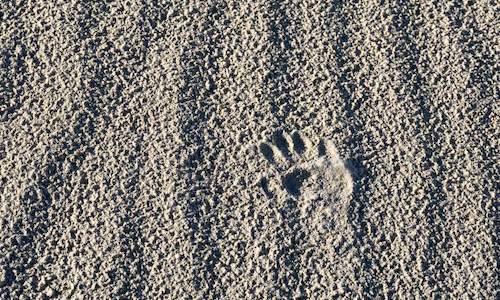
Chacma Baboons (Papio Ursunis) are seldom responsible for livestock losses, but troops may cause extensive damages to vineyards, vegetable a...
more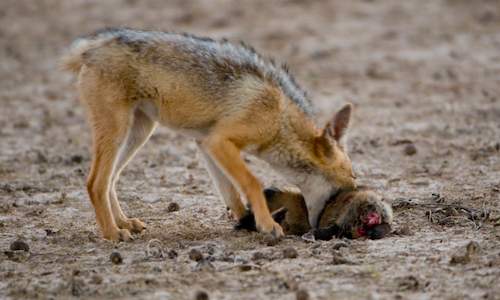
To effectively manage predation, the damage causing animal needs to be accurately identified. Bite marks, bone damage, feeding patterns, tra...
more
The brown hyena (Hyena brunnea) is also called a strandwolf – an Afrikaans word meaning “beach wolf” when directly translated into Eng...
more
Bush pigs (Potamochoerus larvatus) are found from the northern and eastern parts of South Africa from southern KwaZulu-Natal, the interior o...
more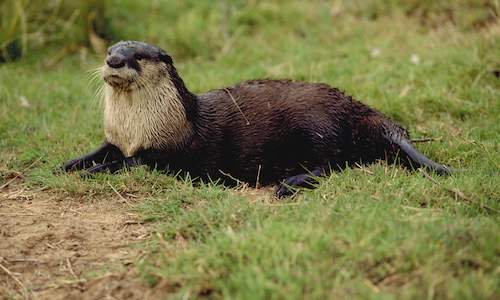
The Cape clawless otter (Aonyx Capensis) derive their name from the fact that their front feet are adapted to digging and therefore do not h...
more
While they tend to favour fish, worms, molluscs, eggs and smaller birds, Cape Gulls (Larus Vetula) may also prey on small livestock, such as...
more
The Caracal (Felis caracal caracal) derives its name from the Turkish word “karakula”, which means black ear. As the name implies, the b...
more
The Cheetah (Acinonyx jubatus) derives its name from the Hindi word “Chita”, which means “spotted one” because of the round black sp...
more
Crows may cause extensive losses to livestock as well as to crop, fruit and grape farmers. Increasing numbers are resulting in growing conce...
more
Domestic dogs (Canis familiaris) may cause huge damage on livestock farms. Some people think it is only hungry stray dogs that cause damage,...
more
Eagles and other birds of prey are often wrongfully accused of killing small livestock, because they will continue feeding on a dead animal,...
more
The Honey Badger (Mellivora capensis) is a tough, thick-skinned weasel, which is also why one of South Africa’s first Infantry Combat Vehi...
more
The name of the leopard (Panthera Pardus) has been derived from Greek words that means lion and panther, because of an earlier belief that l...
more
The spotted hyena (Crocuta crocuta) is the largest of the hyena family. They look like very large, heavily built dogs, usually with a length...
more
With an adult length of 86 to 97 cm and weight of 2,5 kg to 4 kg, the Cape Fox (Vulpus chama), also known as the Silver Fox, is one of the s...
more
Where predators used to be seen as the “enemy” that has to be destroyed at all costs, farmers these days realise that besides helping to...
more
Besides following the law to make it easier for the police to catch and prosecute thieves, the National Stock Theft Prevention Unit gives th...
more
Predation is one of the greatest threats to the economic survival of new, emerging as well as commercial livestock farmers. It is also one o...
more
Livestock producers take sustainable predation management so serious that the National Wool Growers’ Association, the Red Meat Producers�...
more
Red meat producers annually lose hundreds of millions of Rand due to stock theft. The National Stock Theft Prevention Forum has the followin...
more
The development of new technology is allowing farmers to better protect and keep track of livestock and predators. The use of tags, cameras ...
more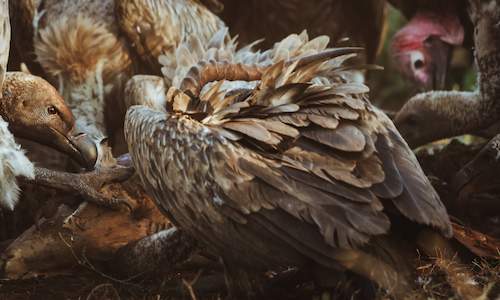
Pesticides, which include insecticides, fungicides, herbicides, additives and adjuvants may only be used for the purposes indicated on their...
more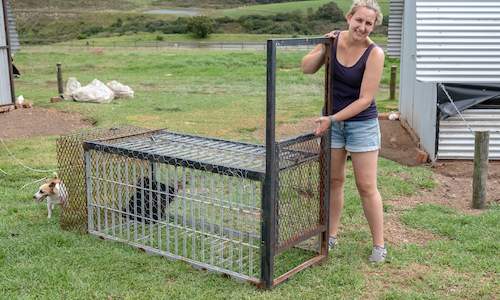
Traps can be used to catch predators, but the traps should be set up by an expert and be used in a way that does not injure the animals. Per...
more
 All cattle, sheep, goats, ostriches, pigs and horses have to be branded with an identification mark, according to the Animal Identification ...
All cattle, sheep, goats, ostriches, pigs and horses have to be branded with an identification mark, according to the Animal Identification ... Animals can be tattooed or branded with a hot or frozen iron. Some farmers also acquire special approval to use other means of branding, wit...
Animals can be tattooed or branded with a hot or frozen iron. Some farmers also acquire special approval to use other means of branding, wit... Livestock can be guarded against predation in various ways, including through the use of herdsmen, guarding dogs, alpacas, donkeys, ostriche...
Livestock can be guarded against predation in various ways, including through the use of herdsmen, guarding dogs, alpacas, donkeys, ostriche... Shooting a predator should really be seen as a last resort when dealing with predation and then be aimed at the specific damage causing culp...
Shooting a predator should really be seen as a last resort when dealing with predation and then be aimed at the specific damage causing culp... The African Wild Cat (Felis silvestris lybica) is an indigenous species of Africa and an ancestor of the domestic cat. They look like domest...
The African Wild Cat (Felis silvestris lybica) is an indigenous species of Africa and an ancestor of the domestic cat. They look like domest... Chacma Baboons (Papio Ursunis) are seldom responsible for livestock losses, but troops may cause extensive damages to vineyards, vegetable a...
Chacma Baboons (Papio Ursunis) are seldom responsible for livestock losses, but troops may cause extensive damages to vineyards, vegetable a... To effectively manage predation, the damage causing animal needs to be accurately identified. Bite marks, bone damage, feeding patterns, tra...
To effectively manage predation, the damage causing animal needs to be accurately identified. Bite marks, bone damage, feeding patterns, tra... The brown hyena (Hyena brunnea) is also called a strandwolf – an Afrikaans word meaning “beach wolf” when directly translated into Eng...
The brown hyena (Hyena brunnea) is also called a strandwolf – an Afrikaans word meaning “beach wolf” when directly translated into Eng... Bush pigs (Potamochoerus larvatus) are found from the northern and eastern parts of South Africa from southern KwaZulu-Natal, the interior o...
Bush pigs (Potamochoerus larvatus) are found from the northern and eastern parts of South Africa from southern KwaZulu-Natal, the interior o... The Cape clawless otter (Aonyx Capensis) derive their name from the fact that their front feet are adapted to digging and therefore do not h...
The Cape clawless otter (Aonyx Capensis) derive their name from the fact that their front feet are adapted to digging and therefore do not h... While they tend to favour fish, worms, molluscs, eggs and smaller birds, Cape Gulls (Larus Vetula) may also prey on small livestock, such as...
While they tend to favour fish, worms, molluscs, eggs and smaller birds, Cape Gulls (Larus Vetula) may also prey on small livestock, such as... The Caracal (Felis caracal caracal) derives its name from the Turkish word “karakula”, which means black ear. As the name implies, the b...
The Caracal (Felis caracal caracal) derives its name from the Turkish word “karakula”, which means black ear. As the name implies, the b... The Cheetah (Acinonyx jubatus) derives its name from the Hindi word “Chita”, which means “spotted one” because of the round black sp...
The Cheetah (Acinonyx jubatus) derives its name from the Hindi word “Chita”, which means “spotted one” because of the round black sp... Crows may cause extensive losses to livestock as well as to crop, fruit and grape farmers. Increasing numbers are resulting in growing conce...
Crows may cause extensive losses to livestock as well as to crop, fruit and grape farmers. Increasing numbers are resulting in growing conce... Domestic dogs (Canis familiaris) may cause huge damage on livestock farms. Some people think it is only hungry stray dogs that cause damage,...
Domestic dogs (Canis familiaris) may cause huge damage on livestock farms. Some people think it is only hungry stray dogs that cause damage,... Eagles and other birds of prey are often wrongfully accused of killing small livestock, because they will continue feeding on a dead animal,...
Eagles and other birds of prey are often wrongfully accused of killing small livestock, because they will continue feeding on a dead animal,... The Honey Badger (Mellivora capensis) is a tough, thick-skinned weasel, which is also why one of South Africa’s first Infantry Combat Vehi...
The Honey Badger (Mellivora capensis) is a tough, thick-skinned weasel, which is also why one of South Africa’s first Infantry Combat Vehi... The name of the leopard (Panthera Pardus) has been derived from Greek words that means lion and panther, because of an earlier belief that l...
The name of the leopard (Panthera Pardus) has been derived from Greek words that means lion and panther, because of an earlier belief that l... The spotted hyena (Crocuta crocuta) is the largest of the hyena family. They look like very large, heavily built dogs, usually with a length...
The spotted hyena (Crocuta crocuta) is the largest of the hyena family. They look like very large, heavily built dogs, usually with a length... With an adult length of 86 to 97 cm and weight of 2,5 kg to 4 kg, the Cape Fox (Vulpus chama), also known as the Silver Fox, is one of the s...
With an adult length of 86 to 97 cm and weight of 2,5 kg to 4 kg, the Cape Fox (Vulpus chama), also known as the Silver Fox, is one of the s... Where predators used to be seen as the “enemy” that has to be destroyed at all costs, farmers these days realise that besides helping to...
Where predators used to be seen as the “enemy” that has to be destroyed at all costs, farmers these days realise that besides helping to... Besides following the law to make it easier for the police to catch and prosecute thieves, the National Stock Theft Prevention Unit gives th...
Besides following the law to make it easier for the police to catch and prosecute thieves, the National Stock Theft Prevention Unit gives th... Predation is one of the greatest threats to the economic survival of new, emerging as well as commercial livestock farmers. It is also one o...
Predation is one of the greatest threats to the economic survival of new, emerging as well as commercial livestock farmers. It is also one o... Livestock producers take sustainable predation management so serious that the National Wool Growers’ Association, the Red Meat Producers�...
Livestock producers take sustainable predation management so serious that the National Wool Growers’ Association, the Red Meat Producers�... Red meat producers annually lose hundreds of millions of Rand due to stock theft. The National Stock Theft Prevention Forum has the followin...
Red meat producers annually lose hundreds of millions of Rand due to stock theft. The National Stock Theft Prevention Forum has the followin... The development of new technology is allowing farmers to better protect and keep track of livestock and predators. The use of tags, cameras ...
The development of new technology is allowing farmers to better protect and keep track of livestock and predators. The use of tags, cameras ... Pesticides, which include insecticides, fungicides, herbicides, additives and adjuvants may only be used for the purposes indicated on their...
Pesticides, which include insecticides, fungicides, herbicides, additives and adjuvants may only be used for the purposes indicated on their... Traps can be used to catch predators, but the traps should be set up by an expert and be used in a way that does not injure the animals. Per...
Traps can be used to catch predators, but the traps should be set up by an expert and be used in a way that does not injure the animals. Per...